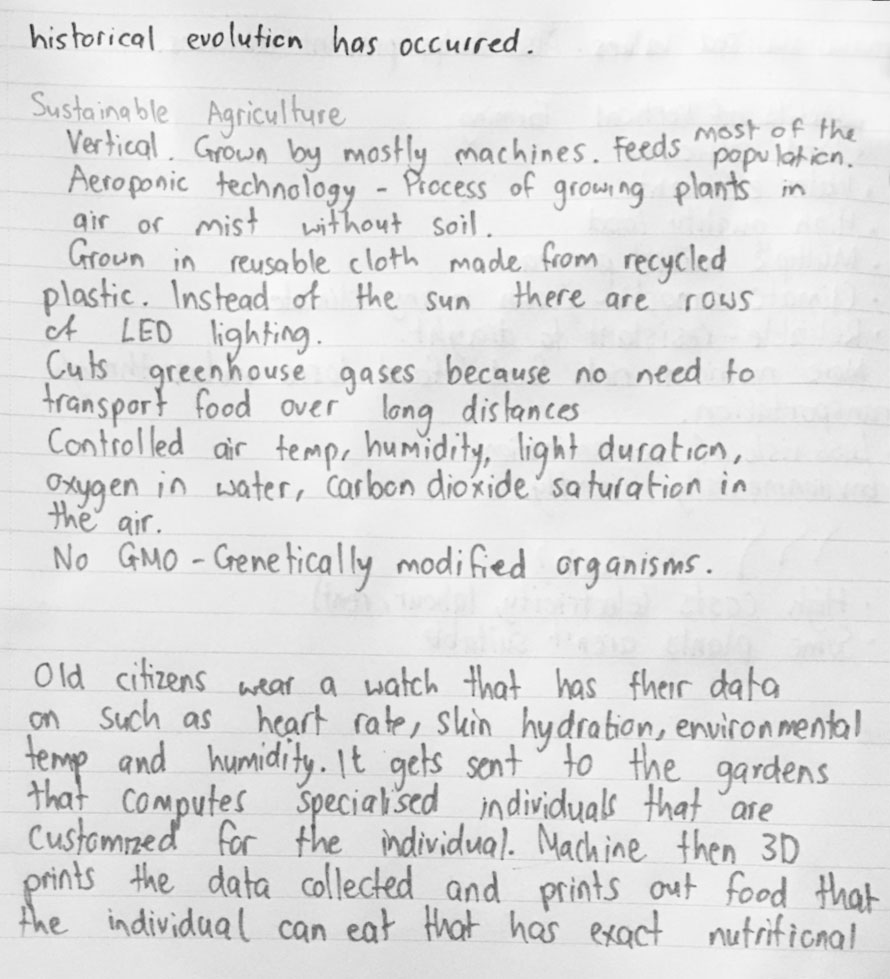Back
STAKEHOLDERS(MAP)
Teachers, in their 30’s, 40’s, 50’s. Basisschool, Middelbare school, MBO, HBO, Universiteit.
Students, Basisschool (age 4-12), Middelbare school (age 12-16/17), MBO (age 16-20), HBO (age 16-26), Universiteit (18-...)
Toddlers (age 1-3)
Parents in their 30’s, 40’s, 50’s, living in residental areas. Parents with young kids live close to school, with older kids not nessecarily. Students might live on their own in dorm rooms in the city.
Talent - Media Company - Technology Medium - Consumers, every generation.
Employees, 2 operational managers in the farms which manage the farm and make sure things run smoothly. (architects, designers, scientists) food gets driven by automated self driving machines to shops.
Hydropower designers, Architects, Engineers, Scientists, Marine biologists
Ex-busdriver age 50, taking a reeducation program to become a security guard/man that keeps an eye on the farm.
POTENTIAL STAKEHOLDERS
.
.
.
.
.
.
.
.
Stakeholder family ideas:
Ex-busdriver (Joe) age 50 works as a security guard at the farm, his wife (Bali) is a marine biologist at Rotterdam Hydropower Corporation (RHC), and they have one kid (Mette), age 17 in Middelbare school (high school) VWO, that is online. They live next to the farm, so he can keep an eye on it.
Denisa (age 30), a gender fluid high school teacher rises early in the morning. She lives with her cat, in a smart home (powered by hydropower). In the morning she goes on her treadmill, and puts on her VR glasses. She runs through an amazon forest. Then she showers, gets dressed in her sustainable GREENFASHION © uniform , and hops on her hydro-powered bike.
.
.
More about Entertainment Industry:
VR/AR Immersion
Technology and Media grow together
Personalisation - AI Advances
New Mediums - Innovation
AI replacing jobs —> Not really
Even more time to spend on media —> Autonomous vehicles
Stakeholders : Every generation consumes media, but in different forms on different levels
Talent - Media Company - Technology Medium - Consumer
More about Sustainable Agriculture:
Could be done on reclaimed land which was built due to the flooding.


More about Sustainable fashion suit:
AI, ML, and robotics push fast fashion even further towards trendy innovative solutions. the fashion world enters the era of high speeds. High personalization is also in the doorway.
With increasing consciousness of younger consumers, young buyers will make corporate social responsibility a new critical pillar. Fast-fashion companies are now pressured to be sustainable and more rational in their decisions. On the other hand, Millennials’ and Gen Z’s behavior is highly affected by influencers such as actors and social media celebrities.
Fast, sustainable, and hi-tech are new critical elements needed for the survival of fast-fashion brands.
Textile-industry scientists are experimenting with a range of less environmentally damaging, more sustainable materials for us to wear. Much of it is derived from naturally occurring sources.
Rather than create things that go out of fashion within weeks or months, the principle of emotionally durable design is starting to take hold.
New opportunities for personalisation and customisation, unlocked by advances manufacturing technologies, and even 3D printing.
Nike, Adidas, Vans and Converse each now have their own online create-your-own offerings.
.
.
.
.
.
.
.
.
.
.
.
.
.